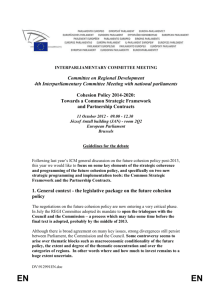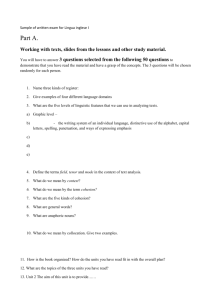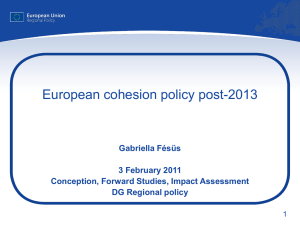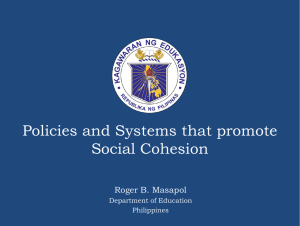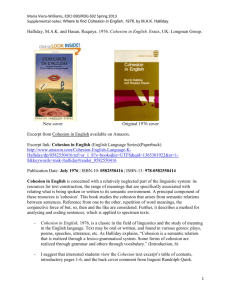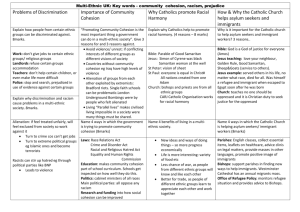Teams
advertisement
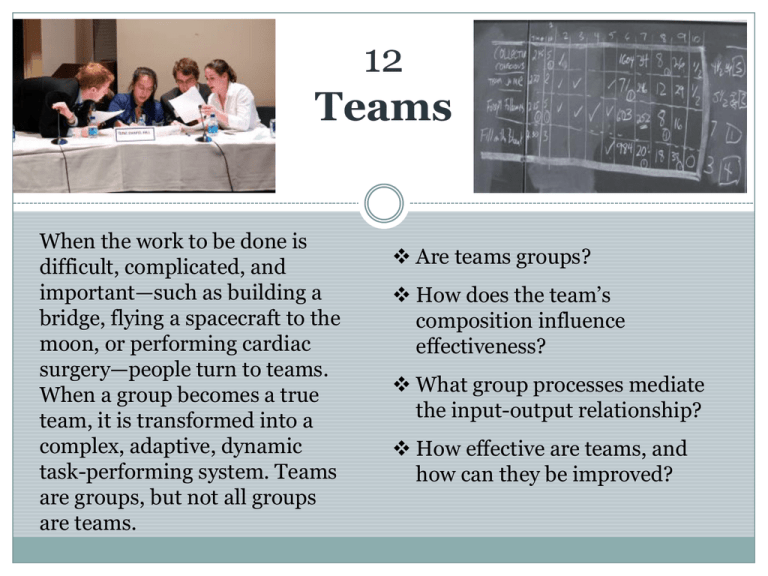
12 Teams When the work to be done is difficult, complicated, and important—such as building a bridge, flying a spacecraft to the moon, or performing cardiac surgery—people turn to teams. When a group becomes a true team, it is transformed into a complex, adaptive, dynamic task-performing system. Teams are groups, but not all groups are teams. Are teams groups? How does the team’s composition influence effectiveness? What group processes mediate the input-output relationship? How effective are teams, and how can they be improved? Preview Teams The Nature of Teams Building the Team Working in Teams Team Performance History of teams The team player Team processes Evaluating teams What is a team? KSAs Cognitive processes Suggestions Types of teams Diversity Cohesion Systems model Men & Women History of teams The first documented use of the word team to describe groups of humans working collectively did not occur until the 1600s: Twere like falling into a whole Shire of butter: they had need be a teeme of Dutchmen, should draw him out” (Ben Jonson, Bartholomew Fayre) Team: from the old English and Norse word “for a bridle and thence to a set of draught animals harnessed together” (Annett & Stanton, 2001, p. 1045). Half of the workers in the United States now belong to at least one team at work. Percentage of Organizations Relying on Teams by Type of Industry Corporate Industry Nonprofit 0 50 100 Data Source: Devine et al., 1999 Interaction What is a team? Teams are “extreme” groups, for each of the qualities of a typical group are exhibited, to an extreme degree, in a team Goals Interdependence Structure Unity •concentrated •continuous • performance/outcome focused • collective goals rather than only individualistic ones • tightly coupled dependencies • member’s have interlocking abilities, skills… • clearly defined roles and norms • explicit lines of authority communication are • cohesive • collective efficacy Types of teams Management Project Executive Negotiation Command Commission Design Advisory Work Action Expeditions • Mobile, exploration focused Service Performance Production Medical Crews Response • Make use of tools, equipment Military Task Forces Transportation • Specific project,Sports time limited Types of teams Hackman identifies four types of teams based on responsibility for setting procedures and goals • Manager-led • Self-managing • Self-designing • Self-governing Cross-functional teams (project groups composed of people with differing types of functional expertise) are common in many organizations, but they tend to be unstable and not particularly effective. When teams? Task Demands Psychological & Interpersonal Demands How difficult is the Desire for company task? How complex is the task? How important is the task? How monotonous/dull is the task? (work partners) Diffusion of responsibility Social loafing “Romance of Teams” Systems model The I-P-O Model of Teams The Nature of Teams Building the Team The team player Working in Teams Example: The Team 1980 US Hockey Performance Team Strong composition effects (fit of members) KSAs Presence of “team players” Individual level of skill and Diversity experience Men& Low diversity and high Women cohesion Outstanding leadership Building the Team The team player Teamwork and Personality .05 Emotional Stability .12 .16 .25 .24 Extraversion Openness Agreeableness Conscientiousness Adjustment Dominance Flexibility Trust Dependability Self-esteem Affiliation Cooperation Dutifulness Social perceptiveness Achievement Efficacy Expressivity Performance KSAs 10 9 8 7 6 5 4 3 2 1 0 In general, great teams require great group members Additive effects Most Groups Rare (baffling) groups Skills, training of individual members Synergy effect Weakest link effect Bad apple effect Diversity Broader range of KSAs Increased creativity, less traditional solutions and outlooks Advantages of Heterogeneous Teams Advantages of Homogenous Teams Stronger social identity, fewer schisms, subgroups More cohesive Reduced conflict, misunderstanding Dealing with Team Diversity Surface diversity easy to deal with, deep diversity more difficult Organizational support Reduce tendency to subgroup Mixing Men and Women in Teams: bonding effects, sexism, tradition, “civilizing” effects, tokenism, etc. The Nature of Teams Building the Team Working in Teams Team Performance Team processes Team Processes: How well do members combine Cognitive their knowledge, skills, abilities and resources processes through a coordinated series of actions Cognitive Processes:Cohesion Do members share an understanding of the team’s tasks, resources, and procedures? Cohesion: Is the group unified? Team processes Transition Processes Mission analysis Goal specification Strategy formulation Action Process Interpersonal Process Monitoring progress Conflict management Monitor int/ext resources/ demands Motivation Monitor/tweak “teamwork” Affect /cohesion management Coordination Social support Team Processes Team Cognition Transactive memory: a process by which information to be remembered is distributed to various members of the group who can ten be relied upon to provide that information when it is needed High performing teams Capitalize on transactive memory processes: different members are trusted to know specific areas of information Train as a team, rather than individually Review their work regularly and identify methods to improve Team Learning Team Cohesion Social Cohesion Task Cohesion Collective Cohesion Emotional Cohesion Structural Cohesion Sources • A teams’s cohesiveness derives on a number of sources, such as attraction, commitment to a task, and so on. The Nature of Teams Building the Team Working in Teams Team Performance Evaluating teams Suggestions Is he right? Empirical evidence is mixed Hackman maintains that teams should: 1. Meet standards of quantity, quality, and timeliness 2. The team should improve over time. 3. The team should contribute in positive ways to members’ wellbeing and learning Case studies and field Suggestions: studies generally support the effectiveness of teams Make certain that so-called teams actually are teams Experimental studies identify a number of Train individuals to work in limitations for working in teams and to lead teams teams Surveysorganizational of workers find Provide (and financial) support to teams widespread dissatisfaction (Remember quality circle!) with teamsthe (and leaders) Review Teams The Nature of Teams Building the Team Working in Teams Team Performance History of teams The team player Team processes Evaluating teams What is a team? KSAs Cognitive processes Suggestions Types of teams Diversity Cohesion Systems model Men & Women



